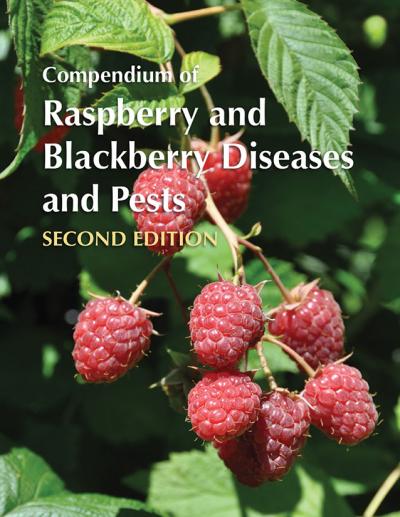
Credit: Courtesy of The American Phytopathological Society
St. Paul, Minn. (June 2017)– Raspberries and blackberries are favorites among consumers–but unfortunately also favorites for plant diseases, bugs, and other pests.
A new resource from APS PRESS, the Compendium of Raspberry and Blackberry Diseases and Pests, Second Edition, helps ensure more berries make it into the mouths of consumers.
This comprehensive up-to-date industry reference helps users quickly identify and manage raspberry and blackberry diseases, insect pests, and abiotic orders with more than 200 high-quality images for diagnosis and practical management guidelines.
Significantly larger than the first edition, Compendium of Raspberry and Blackberry Diseases and Pests, Second Edition greatly expands its coverage of the crop. The book is filled with revised and updated disease information and management guidelines for traditional production systems, but it also covers issues that occur in the newer organic and high-tunnel production. Its scope also geographically expands of cover the world's raspberry and blackberry production regions. Plus, it covers new diseases and viruses that have been identified since the first edition. In total, this latest edition has expanded by more than more than 50 pages, and nearly all other information has been revised and updated.
Each section of this comprehensive book includes information on symptoms, causal organisms, distribution, diagnostic features or detection methods, and management strategies.
- Bacterial, fungal, and viral diseases
- Insect and mite pests
- Abiotic disorders, such as herbicide injury and environmental stressors
- Diseases caused by an alga
- Diseases caused by a phytoplasma
Also included are two new sections on the use and effects of cultural practices, as well as the development of healthy planting materials in the nursery/greenhouse industry.
The Compendium of Raspberry and Blackberry Diseases and Pests, Second Edition is ideal for commercial growing operations, nurseries, crop consultants, extension educators, diagnosticians, plant pathologists, entomologists, horticulturists, regulators, and gardeners.
###
Visit http://www.shopapspress.org to learn more about the Compendium of Raspberry and Blackberry Diseases and Pests, Second Edition and other important crop health titles from APS PRESS.
Book Specifications and Data
©2017; 8.5" × 11" softcover; 175 pages; 184 color images; 24 black-and-white images; 2 pounds; ISBN 978-0-89054-569-0
This book is published by The American Phytopathological Society (APS) and may be purchased for $189 plus S&H from APS PRESS. Bulk discounts are available for diagnosticians, field representatives, state and county extension, farm managers, and other professionals.
Media Contact
Phil Bogdan
[email protected]
651-994-3859
http://www.apsnet.org
############
Story Source: Materials provided by Scienmag





